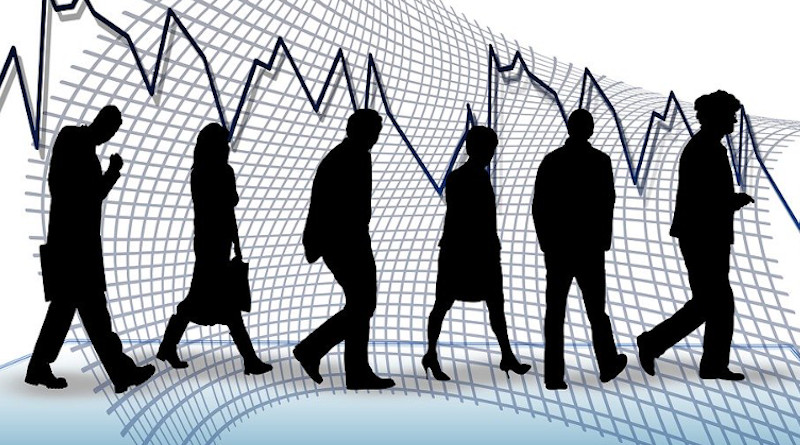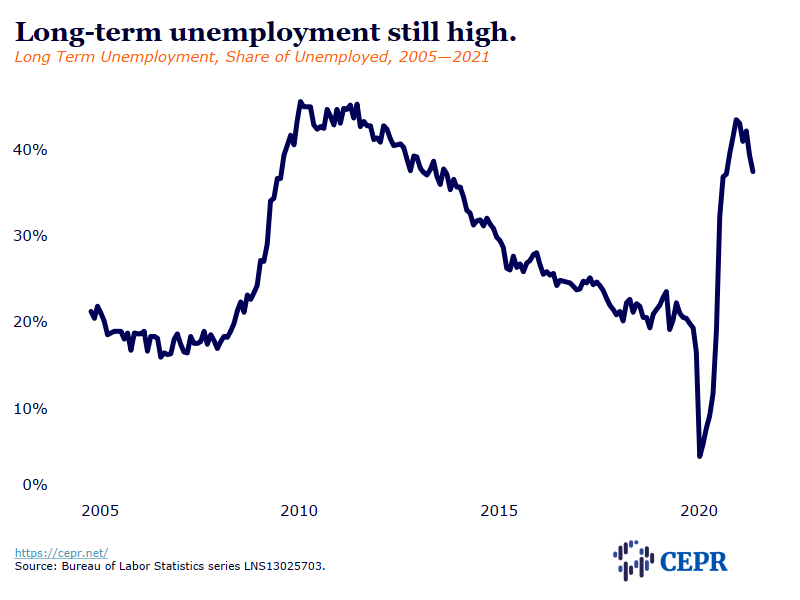US Economy Adds 235,000 Jobs In August; Unemployment Falls To 5.2 Percent – Analysis
By Dean Baker
The August job gains were somewhat weaker than expected; although it is not clear that it should be viewed as a seriously negative report. The 235,000 figure is less than half of what most forecasters had been predicting, but it was still associated with a 0.2 percentage point drop in the unemployment rate to 5.2 percent. The unemployment rate had not fallen to 5.2 percent following the Great Recession until July of 2015. It is also important to note that in the prior two months jobs gains were revised up 134,000, bringing the three-month average to 750,000.
State and Local Government Lost 11,000 Jobs in August
The state and local sectors, which are still down 815,000 jobs from their pre-pandemic level, lost 11,000 jobs after adding 246,000 in July. This is likely a question of timing, with some jobs that would be added back in the fall showing up in July and some still to appear in September. It may be some time before state and local governments gain back all the jobs lost in the pandemic, but with most schools back to in-person instruction and most of these governments’ budgets in reasonably good shape, it seems likely most jobs will be coming back soon.
Restaurants Shed 41,500 Jobs in August
By far the biggest single factor in the slowdown from July to August was the loss of 41,500 restaurant jobs after a gain of 290,000 in July. There are several different factors at play in this. Clearly the spread of the Delta variant played a role, but that can be exaggerated. The arts and entertainment sector, which is also dependent on in-person gatherings, added 35,000 jobs in the month.
Restaurant owners have complained that they can’t find workers. They had been blaming the $300 unemployment insurance (UI) supplements, but with almost half the states ending their pandemic UI programs, this cannot be the explanation. But wages are rising very rapidly in the lowest paying sectors. Over the last year, the average hourly pay for production and nonsupervisory workers in leisure and hospitality has risen by 12.8 percent. In the last three months (June, July, and August) compared with the prior three months (March, April, and May), the average hourly wage in the sector has risen at a 23.7 percent annual rate.
These sorts of rapid wage gains are consistent with a story where employers really are unable to find workers. In some cases, employers may not be able to afford to offer higher wages. That will mean they will go out of business, but that is the way a healthy capitalist economy works, with workers moving from lower-paying, lower-productivity sectors to higher-paying, higher-productivity sectors.
Home Health Care and Nursing Homes Both Lose Workers in August
The home health care sector lost 11,600 jobs in August, while nursing homes lost 7,100 jobs. Both of these are among the lowest-paying sectors in the economy. The job loss is consistent with a story where workers feel they are in a position to turn down jobs with low pay and bad working conditions.
Share of Unemployment Due to Quits Fell to 9.9 Percent
The share of unemployment due to voluntary quits fell 0.9 percentage points to 9.9 percent, reversing the July increase. This goes in the opposite direction of a story where workers feel comfortable quitting a job without a new one lined up.
One factor keeping down the quit share of unemployment is the continued high share of long-term unemployed (more than 26 weeks). This fell slightly to 37.4 percent, but is still unusually high.
The Number of Unincorporated Self-Employed is More than 700,000 Above the 2019 Average
There was a small drop in the people reported as being unincorporated self-employed (more than 60 percent of the self-employed), but it is still more than 700,000 above the average for 2019. The monthly data are erratic, but seeing a high number month after month indicates that the rise in this category of self-employment (more than 7 percent) is real.
Asian American Unemployment Falls 0.7 Percentage Points
The unemployment rate for Asian Americans fell 0.7 percentage points to 4.6 percent. This still leaves it slightly higher than the 4.5 percent for whites. It is typically slightly lower than the unemployment rate for whites.
Manufacturing Added 37,000 Jobs in August
This gain follows a 52,000 gain in July, which was revised up by 25,000 from a previously reported gain of 27,000. The 89,000 two-month gain is the strongest since May and June of last year when the economy was recovering from the shutdown.
Black Teen Unemployment Rises 4.6 Percentage Points
The unemployment rate for Black teens jumped 4.6 percentage points to 17.9 percent. This is unfortunately still a low level for Black teens, but their unemployment rate has been at record lows in the prior three months.
Mixed Employment Report for August
This is a difficult unemployment report to read. While it is easy to be disappointed with the 235,000 overall job growth number, it is important to remember that months of extraordinarily rapid job growth, like June and July, are likely to be followed by slower job growth, for the simple reason that if employers make a lot of hires in one month, they don’t hire people again. The three month-average of 750,000 is still solid by any measure.
It also seems likely that much of the seeming weakness in job growth is on the supply side as workers are opting not to work at the lowest-paying, and often least desirable, jobs. This would explain the drop not only in restaurant jobs but also jobs in home health care and nursing homes. If workers now feel they don’t have to take these jobs (perhaps because of money saved from their pandemic checks), unless they get much better pay, this is a positive for the economy.
It is also worth noting that we are hugely ahead of the recovery from the Great Recession. The employment-to-population ratio (EPOP) for prime age workers (ages 25 to 54) rose 0.2 percentage points to 78.0 percent, a level we did not reach until July of 2016 following the Great Recession. The broad U-6 measure of unemployment fell 0.4 percentage points to 8.8 percent, a level not reached following the Great Recession until March of 2017.
In short, this should not be viewed as a terrible jobs report. The growth is definitely weaker than we need, given that we are still down more than 5 million jobs, but in the context of the last two months’ extraordinary growth, perhaps a slowdown should not be a surprise. As the impact of the Delta variant fades in the months ahead, we should see strong job growth through the fall.


